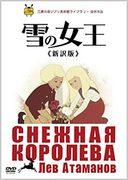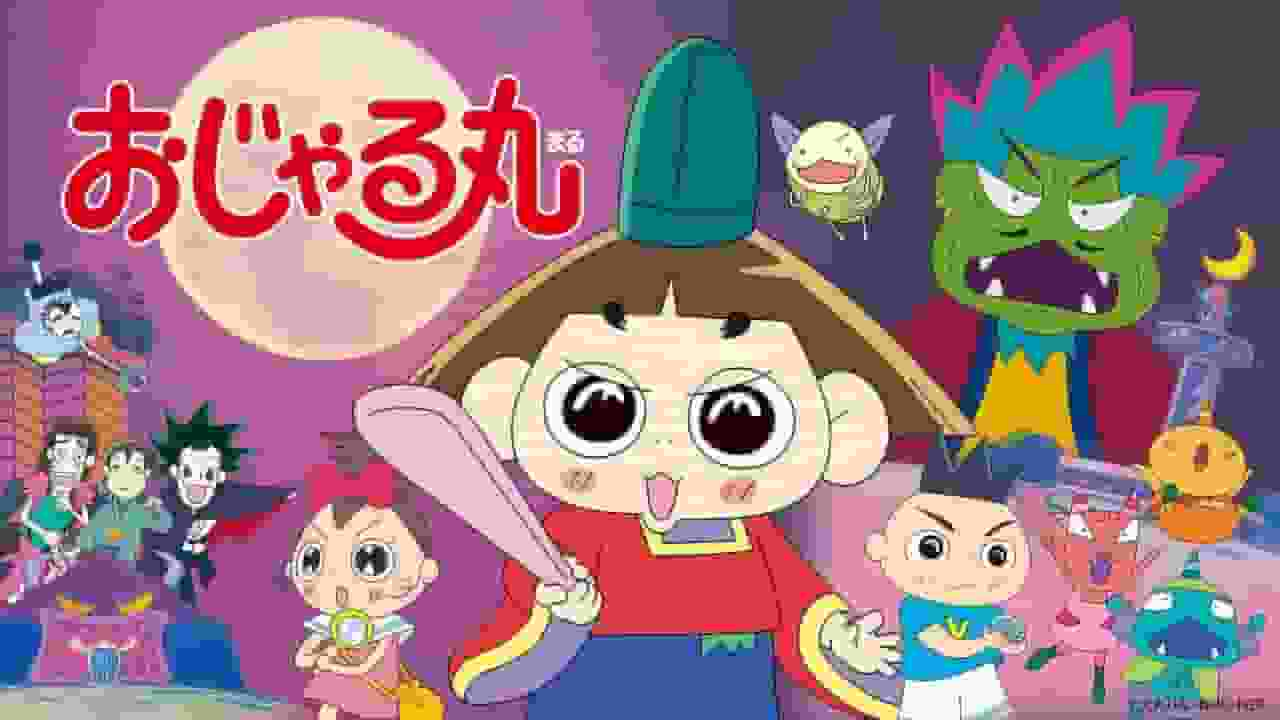New translation of The Snow Queen: A thorough evaluation of the fascinating story and modern interpretation

The Snow Queen <New Translation> - Yukinojoou<New Translation>■ Public Mediatheater ■ Original MediaFairy tales ■ Release dateDecember 15, 2007 - January 1, 0000 ■Distribution companyGhibli Museum, Mitaka ■Frequencies65 min ■ Number of EpisodesEpisode 1 ■Original StoryHC Andersen "The Snow Queen" ■ DirectorLev Atamanov ■ ProductionProduced by Sayusumrit Films ■Works©2007 Tokuma Memorial Foundation for Animation ©2004 Films By Jove Inc. in association with Soyuzmultfilms studio ■ StoryHis single-minded passion moves the hearts of the nature, animals and people he encounters wherever he goes. In an old, small town in the north, a boy named Kai and a girl named Gerda spend their time together in a rooftop garden. They are childhood friends who care about each other and give each other roses. One winter night, while Gerda was listening to her grandmother's story about the Snow Queen in front of the fireplace, Kai felt the presence of the Snow Queen outside the window. Gerda was frightened, so Kai said with a smile, "When the Snow Queen comes into the room, I'll make you sit by the hot fireplace." The Snow Queen was furious when she heard this, and she put a terrible curse on Kai's eyes and heart with shards of ice, so that he would only see foolish things and his heart would become evil. From that day on, Kai became a completely different person, and became very mean. Then, one cold winter day, Kai was kidnapped by the Snow Queen. The Snow Queen tells Kai that this is a wonderful kingdom, a place of peace and solitude without love, joy or pain, in her ice palace. When winter passes and Kai still doesn't return, Gerda sets off on a journey to find him. Her earnest desire to help Kai moves the hearts of the nature, animals, and people she meets along the way. ■ExplanationA fateful work for film director Hayao Miyazaki It is a well-known story that Director Miyazaki saw this work and discovered the potential of animation as an expressive medium, which became his aspiration for his subsequent creative endeavors. If "The Legend of the White Snake" (1958, Toei) was the work that inspired him to aspire to become an animator, then "The Snow Queen" was the work that gave him the confidence and goal to continue as an animator. At the time, Director Miyazaki was only disappointed with the work he was given, but it was a fateful event that he encountered this work and was impressed by the infinite possibilities and greatness of animation, and the high aspirations that permeate the entire film. If he had not encountered "The Snow Queen," Hayao Miyazaki may not have become what he was. The camera follows the protagonist Gerda throughout the film, carefully depicting her feelings. During her journey, mysterious and charming characters appear one after another and extend a helping hand to her. And at the end, she confronts a giant enemy head-on, but the girl's love and single-minded feelings defeat it. It is no exaggeration to say that this is where Hayao Miyazaki began. The definitive version of Andersen's "The Snow Queen" Hans Christian Andersen is one of Denmark's leading fairy tale writers, and his many masterpieces continue to be loved around the world. His masterpieces include "The King and the Bird," which is included in the Ghibli Museum Library, and "The Lead Soldier," which will be screened at the same time as this film, as well as "The Little Mermaid," "The Ugly Duckling," and "The Little Match Girl." Among them, "The Snow Queen" is a rare work among Andersen's works that has been adapted into films many times. There is a live-action version made in 2002 in which Bridget Fonda plays the queen, and an NHK TV series that aired two years ago, and it seems to have been featured as a subject for Korean dramas recently. The road movie-like story of the protagonist, a girl who goes on a journey to rescue a kidnapped boy and has various encounters, may be the reason why attempts to adapt it into a film have been made. Among them, "The Snow Queen," which we will introduce this time, is a masterpiece of Russian animation made in 1957. This work was produced under the patronage of the Soviet government at the time, in a system that had nothing to do with commercialism. It has a robust story structure that focuses only on the main character, the young girl Gerda, with unnecessary episodes cut away, and is notable for projecting a uniquely Russian interpretation, such as the animistic ideas and reverence for nature that can be seen throughout the film. Although it was produced 50 years ago, it still has not lost any of its luster. From Legend to Myth The Snow Queen's land where Kai is taken away is a symbol of the land of the dead, a world of peace and cold where one cannot experience joy or pain. Looking at it from another perspective, this work is about Gerda, a young girl full of vitality, taking off all her shoes and everything else to bring her beloved Kai back from the land of the dead. The moment she safely brings Kai back from the world of the dead ruled by the Snow Queen is a miraculous moment in which passion and the power of life overcome death. Director Miyazaki instantly sensed that The Snow Queen contains a fundamental theme of life. That is why he was deeply moved by it and does not hesitate to declare that it is still his favorite work. When filming the Russian version, including director Atamanov, the staff thoroughly removed religious items such as hymns, angels, and the Lord's Prayer from the original work of The Snow Queen. As a result, the story became universal and the strength of life and feelings was highlighted, eventually reaching a height that could be called mythical. There is a theory that mythology is a philosophy that is deeply rooted in animism and exists before the emergence of nations and monotheism (in this case, Christianity), that explains the origins of the world and the birth of life, and preaches wisdom for people to survive. It is fair to say that what "The Snow Queen" depicts, in which one can overcome death and find happiness by pursuing one's passionate feelings, is truly mythical. A new translation of the Russian original revived after 50 years The Snow Queen was released in 1959, two years after its release, in the United States in English, and a Japanese dubbed version was also made based on that. In fact, most of the TV and video releases of The Snow Queen to date have been this Japanese dubbed version, and the original Russian version has only been shown at special screenings at film festivals in recent years. In other words, there have been very few opportunities to watch the original Russian version, and this will be the first time it has been shown in theaters. The Russian version has different music and sound effects from previous versions, and the heavy, romantic score by composer A. Aivazian, reminiscent of Tchaikovsky and Rachmaninoff, has been reproduced, emphasizing the drama and creating a fresh, moving experience. In addition, in preparation for the theatrical release, Hiroko Kojima, a leading Russian interpreter and translator, has completely re-translated the translation herself, and this new translation will be released for the first time, which is a welcome news. ■Cast・Gerda/Y. Jaimor Kai/A. Kamarova ・The Snow Queen/M. Babanova ・The Robber's Daughter/G. Konakhin ・Ole Lugoie/V. Gribkov ■ Main staff - Original story: "The Snow Queen" by HC Andersen ■ Main Characters・Geruda A girl who is devoted to Kai. She sets out on a journey to find Kai who was kidnapped. ■ Review"The Snow Queen (New Translation)" is a Russian animated film produced in 1957 based on the classic fairy tale by HC Andersen, and has been re-released more than 50 years later with a new translation and music. This work is highly regarded for its influence and value, as it is said to have made director Hayao Miyazaki realize the potential of animation and become the starting point of his own creative work. The story begins with the pure friendship between childhood friends Kai and Gerda. After Kai is kidnapped by the Snow Queen, Gerda sets out on a journey to save him, making for a fascinating tale of adventure and growth. Gerda's journey depicts her emotional growth and unwavering love through encounters and partings with nature, animals, and humans. The journey is also visually beautiful, with the depiction of Russian nature and landscapes being particularly stunning. The Snow Queen's ice palace and the forests and rivers that Gerda passes through are depicted with the expressiveness that only animation can provide, drawing the audience in. This work also removes the religious elements from Andersen's original story and emphasizes the power of life and love, depicting a more universal theme. The scene in which Gerda's pure love melts the Snow Queen's cold heart is visually moving and extremely effective as the climax of the story. This scene symbolizes the moment when the power of life triumphs over death, and can be said to have reached a mythical height. Music is also an important element that enhances the appeal of this work. A. Aivazian's score shows the influence of Tchaikovsky and Rachmaninoff, emphasizing the drama. In particular, the music in the scenes depicting Gerda's journey skillfully expresses her inner thoughts, adding depth to the progression of the story. In addition, the music and sound effects have been completely renewed in the new translation, evoking even fresher emotions. The cast also adds to the charm of this work. Y. Jaimou, who plays Gerda, skillfully portrays her purity and strength, leaving a deep impression on the audience. A. Kamarova, who plays Kai, also effectively expresses the coldness of Kai after his heart is stolen by the ice shard, and the warmth of Kai after he is saved by Gerda. M. Babanova, who plays the Snow Queen, firmly conveys the presence of the cold but beautiful queen, heightening the tension of the story. The fact that this work has been re-released with a new translation and music after more than 50 years makes it even more valuable. Hiroko Kojima's new translation has faithfully preserved the spirit of the original while expressing it in words that resonate with modern audiences. The music and sound effects of the original Russian version also enhance the drama of the story, giving audiences a new sense of excitement. "The Snow Queen (New Translation)" is a work that combines beautiful visuals, a moving story, and deep themes, and is highly recommended for audiences of all ages. It is especially recommended for those who want to feel the potential of animation and those who believe in the power of life and love. This work is not only the starting point of director Hayao Miyazaki's creative activities, but it is also a universal story that continues to be loved by many people and will never lose its value in the future. |
<<: The appeal and evaluation of Pyuu to Fuku! Jaguar: A must-read review for anime fans
>>: Tamagotchi movie review: We're moved by the thrilling characters lost in space!
Recommend
Release date is coming soon! The latest stills of the main actors of the Sino-Japanese co-production "Xu Fu: Searching for the Answer to Eternal Life"
The latest Sino-Japanese co-production movie &quo...
How powerful is the box office of "Wolf Warrior 2" while "Changjin Lake" is catching up? Two indicators are still ahead
During this year's National Day holiday, the ...
Impressions and reviews of ReLIFE: The Final Chapter: A new emotion and lesson from youth
ReLIFE Final Chapter - ReLIFE Kanketsuhen - Compr...
The Heroic Legend of Arslan: Dust Storm Dance: The appeal and evaluation of the 4th volume of the Kodansha edition
The Heroic Legend of Arslan: Dust Storm Dance: A ...
The appeal and evaluation of Bungo Stray Dogs Season 2: Developments that exceed expectations and deepening of characters
Bungo Stray Dogs Season 2 Review and Recommendati...
Dwayne Johnson's new film "Jungle Cruise" released poster and is scheduled to be released in mainland China on November 12
Disney's live-action adventure film "Jun...
Dark fantasy style "To the Beasts Who Were Gods" animation will be broadcast in July, new character art is announced
The animation "To the Beasts Who Were Gods&q...
Netflix's The Witcher TV series renewed for second season, seven seasons planned
Previously, Lauren S. Hissrich, producer of Netfl...
Review of the movie "DanMachi" and "Orion's Arrow": An adventure that exceeds expectations
"Is It Wrong to Try to Pick Up Girls in a Du...
Kanna Hashimoto finally becomes a pure goddess! The live-action movie of "Midnight Kiss" is set to be released
The live-action movie "Midnight Kiss", ...
The live-action movie of the famous comic adaptation "Tokyo Avengers" has many characters revealed and will be released on October 9
The live-action movie of the famous time-travel c...
The second trailer of "One Piece: Red" will be released on August 6
The second trailer for the "One Piece" ...
Review of "Onagawa Junior High School Basketball Club: Five Summers": A story of youthful brilliance and bonds
"Onagawa Junior High School Basketball Club:...
Yokohama Specialty Otoko Katayama Gumi - Review and impressions of a masterpiece anime depicting realistic street life
Yokohama Specialty Otoko Katayama Gumi - Yokohama...
A dog-protecting demon wielding a lightsaber kills four enemies in a star-studded war in John Wick 3
Recently, the foreign master "ImmersionVFX&q...









